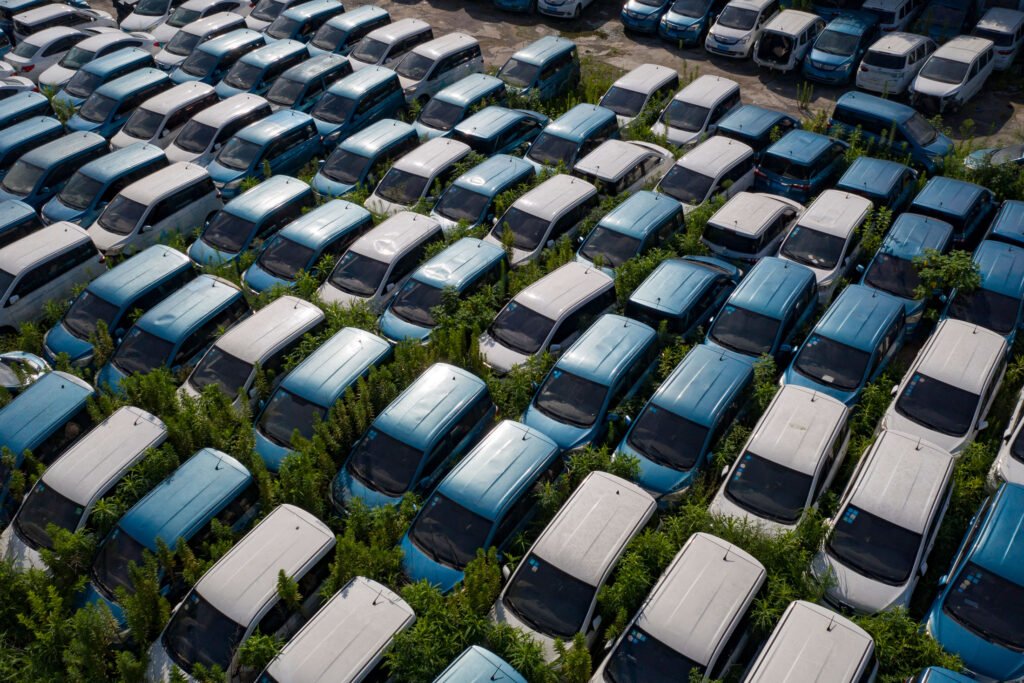
The Problem With Electric Vehicles Hiding in Plain Sight
In the accelerating shift away from traditional combustion engines toward a greener automotive landscape, a surprising obstacle has emerged—reluctance among drivers to invest in used electric vehicles (EVs). This trend is not only affecting the $1.2 trillion secondhand market but is also posing challenges for the broader EV industry.
While there are numerous issues with electric vehicle technology that could be addressed here, one of the more recent hurdles that the market must overcome is what to do with used EV vehicles, according to a recent Fortune article.
According to the article, “No one wants to buy used EVs and they’re piling up in weed-infested graveyards,”. This is a bit hyperbolic, but it does show an issue with how current EVs are marketed, and some of the broader differences between EVs and combustion vehicles.
The secondhand market for EVs is witnessing a decline in demand, contributing to a surplus of these more eco-friendly vehicles languishing in storage. Factors such as the absence of subsidies, a wait for advanced technology, and insufficient charging infrastructure are dissuading buyers from opting for used EVs. When you treat vehicles like technology, it’s not surprising that few want an “outdated” product, especially with how batteries in EV vehicles are expensive and decline in usability over time.

Assuming vehicles like the one above are ever “in-dated”, that is.
According to Geotab, “typically, battery coverage is 8 years or 100,000 miles, but this will vary by manufacturer and country.”
It’s bad enough how much consumer technological waste is out there, such as old iPods and iPhones, but the size and scale of electric cars in comparison should be frightening, to put it mildly. This predicament is causing a ripple effect, impacting the market for both new and used EVs. A fierce price war, sparked by Tesla Inc. and competitive Chinese models, is further diminishing the value of electric cars, affecting competitors like Volkswagen AG and Stellantis NV.
The consequences extend to financing and leasing, as the plummeting value of used EVs prompts automakers and dealers to raise borrowing costs. This, in turn, is dampening demand in European markets that were early adopters of the EV trend.
Looking ahead, the issue is expected to intensify as a significant number of EVs from the 2021 boom in European sales enter the secondhand market upon the expiration of their three-year leasing contracts. How companies address this challenge will play a pivotal role in their financial performance, consumer confidence, and the broader initiative of decarbonization.

Hyundai IONIQ 5 – One of the best EVs currently on the market as far as affordability and range are concerned.
While some used EVs, especially from established brands like Tesla, maintain value due to their reputation as technology leaders, the majority face challenges. The uncertainty surrounding EV technology, concerns about battery life, and the rapid advancements in newer models are steering consumers toward leasing rather than buying. This shift not only impacts the traditional ownership model but also adds complexity to the used EV market, where determining the quality of a battery remains a challenge for the industry.
This is not to say that electric vehicles do not have their place in the more eco-friendly, energy limited and sustainable future that we have to build for both ourselves and the planet as a whole, but I do believe that some of the limitations of electric vehicles are starting to show their face as the industry begins to mature from what was a high-tech product to something more like a typical automobile manufacture. Electric vehicles are orders of magnitude cleaner than their combustion counterparts, but that isn’t to say that it’s a good idea to replace every vehicle on the road with an electric one. What we should be doing is investing in transit infrastructure and building around people, not vehicles.

Image: Kate Prendergast, PhD on LinkedIn.
In the pursuit of a sustainable future, addressing the hesitations around used EVs becomes crucial. Manufacturers are already working on next-generation EVs with improved battery technologies, aiming for cheaper cars, longer ranges, and faster charging. How the industry navigates these challenges will be instrumental in shaping the trajectory of electric vehicles and their role in the broader automotive landscape.